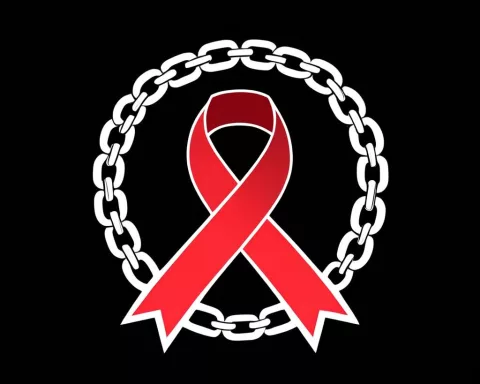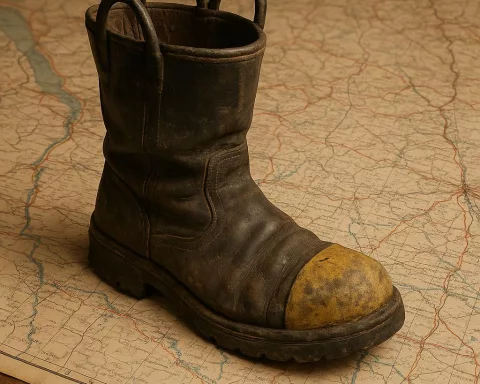PEPFAR is like a lifeline for South Africa, helping to fight HIV and tuberculosis (TB). It provides crucial funding and employs over 15,000 health workers, making it easier for people to get the treatment they need. But now, cuts to this aid are putting many lives at risk, especially for vulnerable groups like drug users and sex workers. With less support, these communities may struggle to access vital care, which could lead to more infections and serious health problems. South African health organizations are now reaching out for help from businesses and individuals to fill the gaps and keep these important services running.
“`markdown
How does PEPFAR impact South Africa’s fight against HIV and TB?
PEPFAR plays a vital role in South Africa’s health system by providing essential funding and support for HIV and TB services. It employs over 15,000 health workers, enabling treatment and prevention efforts. However, recent aid reductions threaten these crucial initiatives and vulnerable populations’ access to care.
“`
Navigating Uncertainty: PEPFAR’s Impact on South Africa’s Fight Against HIV and TB
The Crucial Role of PEPFAR in South Africa
Among the array of global health initiatives, none have played a more critical role in addressing HIV and tuberculosis (TB) than the United States President’s Emergency Plan for AIDS Relief (PEPFAR). This significant program serves as a lifeline for health services worldwide, with a substantial focus on areas heavily burdened by these diseases. South Africa, in particular, has benefited immensely from PEPFAR’s efforts, where it has become foundational in the public health domain. However, the looming withdrawal of this aid threatens to dismantle years of collaborative progress and leaves many uncertain about the future.
In South Africa, the health system’s dependency on PEPFAR cannot be overstated. The initiative employs more than 15,000 individuals, primarily health workers whose contributions are vital. These professionals are instrumental in providing a range of services, from treatment to prevention, tackling various aspects of the HIV crisis. Nonetheless, recent policy changes in the United States, particularly under the Trump administration, have put these endeavors at risk. A series of executive orders, including freezes on foreign development assistance and specific aid restrictions for South Africa, have significantly destabilized financial support.
The ramifications of these funding disruptions are profound and extensive. A temporary waiver allows some HIV services to continue, yet it fails to address the comprehensive array of needs. Organizations offering essential support, notably to vulnerable groups such as drug users, sex workers, and the LGBT community, find themselves struggling to maintain operations. The halt in funding for programs like methadone maintenance—known to reduce needle-sharing and HIV transmission—illustrates the precariousness of the current situation.
The Impact of Aid Reduction on Vulnerable Populations
Dr. Gloria Maimela, a representative of South African health organizations, highlights the severity of the situation. The selective nature of the waiver leaves crucial services without support, increasing the risk for key populations. Despite playing a critical role in containing the spread of HIV, initiatives targeting these groups face closure, with their efforts often undervalued and unsupported. This pattern is reflected across the continent, where similar organizations witness abrupt cessation of aid, further alienating already marginalized communities.
The repercussions of these funding cuts extend beyond the immediate disruption of health services. They threaten to worsen the HIV epidemic, as fewer people gain access to timely testing and treatment. This environment could lead to higher infection rates and the emergence of drug-resistant strains, posing a significant threat to public health. With potential increases in mortality rates and opportunistic infections, the stakes are high.
Ricardo Walters, a consultant with health organizations in Africa, points out the broader implications of these developments. He observes that many programs were terminated due to their association with Diversity, Equity, Inclusion, and Accessibility (DEIA) initiatives, which faced cuts under previous executive directives. Though not explicitly stated, this rationale underscores the tension between policy decisions and on-the-ground realities. Withdrawing funding from programs serving marginalized communities further complicates the dynamics of global health aid.
Seeking New Avenues for Support
In light of these challenges, a coalition of South African health organizations is calling on the private sector for help. They urge corporations, philanthropists, and wealthy individuals to fill the gap left by shrinking US support. This appeal emphasizes the urgent need for diverse funding sources to sustain vital health services, especially as traditional aid models grow increasingly uncertain.
The potential end of PEPFAR funding not only endangers immediate healthcare delivery but also threatens to undo South Africa’s significant public health achievements. Losing access to life-saving antiretroviral treatments for millions, coupled with the incapacitation of healthcare workers, risks reversing hard-won gains in controlling HIV and TB. This situation demands swift action from both traditional aid sources and a broader coalition of stakeholders committed to protecting vulnerable populations’ health and well-being.
Despite the uncertainty surrounding PEPFAR’s future funding, the resilience and determination of South African health organizations persist. They continue advocating for the support necessary to bridge funding gaps and maintain essential services. The call to action extends beyond the immediate crisis, inviting a reevaluation of global health priorities and the mechanisms for delivering aid. In this crucial moment, the collective response will shape the path of HIV and TB efforts, influencing the health landscape for years to come.
“`
This revised article offers a comprehensive, segmented analysis of the challenges and opportunities presented by the potential cessation of PEPFAR funding, aiming to provide valuable insights to the reader while maintaining the original’s style and tone.
“`markdown
FAQ on PEPFAR’s Impact on South Africa’s Health Services
What is PEPFAR and why is it important for South Africa?
PEPFAR (President’s Emergency Plan for AIDS Relief) is a significant U.S. government initiative aimed at combating HIV/AIDS and tuberculosis (TB) globally. In South Africa, it is crucial for providing funding and support to health services, employing over 15,000 health workers who facilitate access to treatment and prevention efforts for these diseases, particularly in vulnerable communities.
How are funding cuts to PEPFAR affecting health services in South Africa?
Recent reductions in PEPFAR funding threaten the sustainability of many health services in South Africa. These cuts are particularly alarming for vulnerable populations such as drug users and sex workers, who rely on targeted programs for essential care. The reduction in aid may lead to increased infection rates and difficulties in accessing vital health services.
What are the potential consequences of reduced support for vulnerable populations?
Without adequate funding, organizations that provide critical services for marginalized groups may have to close or limit their operations. This could result in fewer people receiving timely testing and treatment for HIV, leading to higher rates of infection and the emergence of drug-resistant strains of the virus, which poses severe public health risks.
How are South African health organizations responding to the funding cuts?
In response to the challenges posed by reduced PEPFAR funding, South African health organizations are reaching out for support from the private sector. They are urging businesses, philanthropists, and individuals to help bridge the funding gaps to maintain essential health services, ensuring that vulnerable populations continue to receive the care they need.
What specific programs are at risk due to funding reductions?
Programs that focus on harm reduction, such as methadone maintenance for drug users, are particularly vulnerable to funding cuts. These initiatives play a critical role in preventing HIV transmission and supporting the health of marginalized communities. The potential closure of such programs could exacerbate the ongoing HIV and TB crises in South Africa.
What can individuals and businesses do to help sustain health services in South Africa?
Individuals and businesses can contribute by providing financial support or resources to South African health organizations. Engaging in partnerships, making donations, or advocating for the needs of vulnerable populations can help fill the funding gaps left by PEPFAR cuts, ensuring that essential health services remain operational and accessible.
“`












